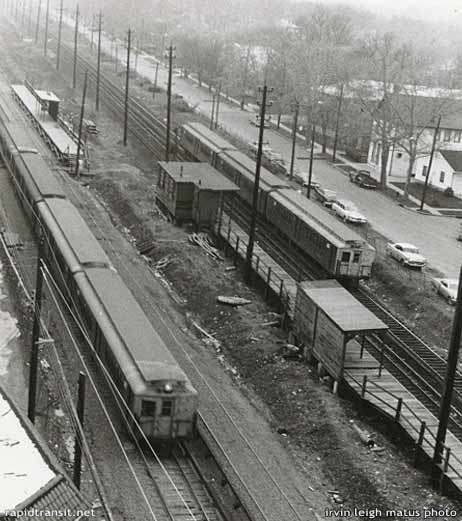
Page 14

An $11 million rehabilitation of parts of the freight trackage in western Staten Island, along with the Arthur Kill Bridge, the world's longest lift bridge, was completed in 1998.
For a time the project was stymied by opposition from Union County, New Jersey landfall of the Staten Island Railroad.
Fears that the improved line would bring no benefits to the local community have been addressed by an agreement signed June 1, 2001 between the Port Authority of NY & NJ and the City of Elizabeth, NJ with the ascent of Union County officials.

Public Ownership
Pressure increased for public takeover of passenger service as the fleet shrank. On July 1, 1971, the Staten Island Rapid Transit Operating Authority, an arm of the Metropolitan Transportation Authority, took charge of the operation. The next year a handful of LIRR MP-72 cars, built in 1955, arrived to supplemtn the fleet. In March 1973 Mayor John Lindsay christened the first of a fleet of 52 R-44 cars (since expanded to 64), part of a larger City subway order, ending an era for New York's little Rural Rapid.
Freight Today:
The Staten Island Railroad Corp.
Today the SIRT is divided in two. The freight operation was retained by B&O's successor CSX and leased to the New York, Susquehanna & Western for operation as the Staten Island Railroad. When the "Susie Q" ceased operations on Staten Island the states of New York and New Jersey expressed an interest in taking over the operation. The City of New York under Mayor Giuliani was especially interested in keeping this rail connection to the national system in New York City.
Grade Crossing Elimination under traffic often requires the building of two complete new railroads -- a temporary line next to the original line, called a shoo-fly, and then a permanent grade-separated line on the original right-of-way. Here a St. George-bound train has just left the temporary Grant CIty platform on the shoo-fly at left, while a Tottenville-bound train has left Grant CIty on the original line. The original Tottenville-bound platform cannot be seen since this was a near-side station in which the platforms were offset from each other.
Updated
©1965 Silver Leaf Rapid Transit. ©2001 Paul Matus. ©2001 The Composing Stack Inc.